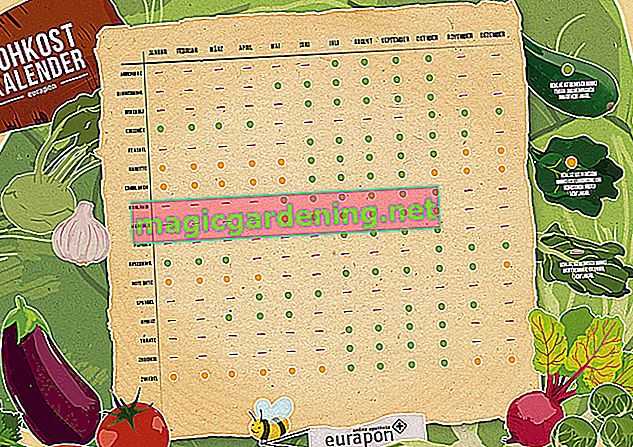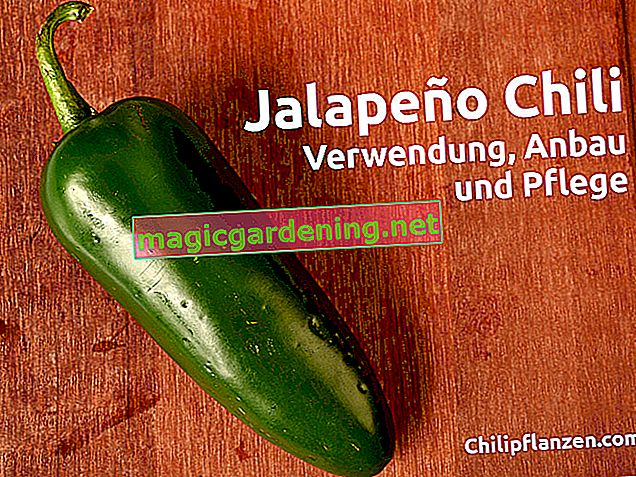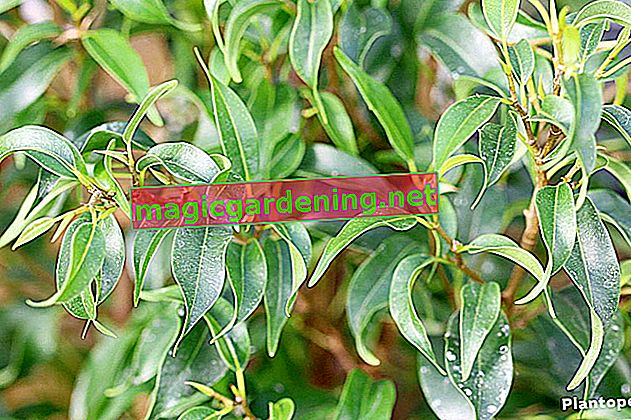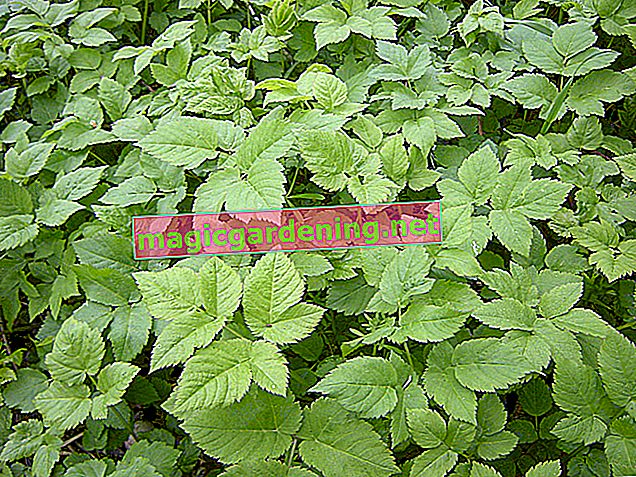
the essentials in brief
- Purchased zucchini can be peeled and eaten raw.
- Organic zucchini from certified cultivation can be eaten raw with the skin on.
- Hobby gardeners first make a sample to rule out that there are poisonous bitter substances in home-grown zucchini.
Eating zucchini raw - safe or risky?
Zucchini is a mild, spicy dish that is rich in vitamins and low in calories. However, the various advantages do not give the green light for carefree raw consumption. The tempting zucchini may be permeated with poisonous cucurbitacins, which can cause serious symptoms of intoxication even in small quantities. Pesticides and bacteria make eating raw food with the skin a balancing act in health. The following table shows when it is safe and risky to eat zucchini raw:
also read
- Drying zucchini - how to make vegetarian zucchini chips
- Storage and preservation of zucchini
- Anyone can buy zucchini plants - preferably on the windowsill too
| harmless | what to do? | risky | what to do? |
|---|---|---|---|
| from the supermarket | peel, enjoy raw | from self-cultivation | Crossing, avoid stress |
| from the weekly market | peel, eat raw | bitter taste | throw away |
| from the health food store | wash, eat with peel | with shell (not organic) | peel |
As this overview shows, there is no one-syllable answer to the question: Can you eat zucchini raw? Carefree enjoyment always depends on which way the zucchini has traveled before it promises a healthy culinary delight on the kitchen table at home. This results in the right preparation up to a hearty bite into the crunchy fruit vegetables. You can read more detailed explanations of all options in the following sections.
Zucchini purchased in stores are special breeds without cucurbitacins and can be eaten raw without hesitation.
What are cucurbitacins?
Cucurbitacins are poisonous bitter substances that can be found in zucchini and other cucurbits. Even small amounts can cause severe poisoning in humans, such as vomiting, diarrhea, stomach cramps and circulatory failure. Unfortunately, these bitter substances are extremely heat-resistant and very difficult to dissolve in water. This fact makes cucurbitacine so dangerous because conventional cooking does not destroy the toxins. It therefore doesn't matter whether you eat zucchini raw or cooked. With a high concentration of bitter substances, health problems are inevitable.
When and how are raw zucchini safe?

For zucchini from the supermarket, the all clear can be given with regard to toxic bitter substances. The delicious green fruits have a good laugh, because they grow wonderfully without cucurbitacine. The toxic ingredients have been bred out of all varieties so that you can also eat yellow zucchini raw. Nonetheless, a shadow falls on raw zucchini, as contamination by pesticides makes eating with the peel a risky undertaking. All fruits that do not come from certified organic cultivation are affected. When and how you can eat raw zucchini carefree, explain the following tips:
- Commercial zucchini : peel, eat raw or cut into salads uncooked
- Organic zucchini : wash thoroughly and eat raw with the skin as a salad, on bread or with a dip
Organic zucchini are clearly ahead if you want to eat the delicious fruit vegetables raw. Certified organic farmers consistently refrain from using pesticides. Conventional zucchini from the store shelf often come with a loaded shell. In the worst case, unpeeled enjoyment is punished with excruciating gas. However, most of the vitamins and trace elements are located directly under the shell. If you can't bring yourself to peel a zucchini, you should at least wash the skin carefully and scrub it with a brush.
Digression
Raw consumption poses a potential risk
Zucchini isn't the only raw vegetable that can hit us hard on the stomach. Caution is also advised when consuming raw potatoes, tomatoes, beans and other delicacies from the vegetable garden. At the top of the list of culinary spoilers are raw potatoes and green tomatoes with high levels of poisonous solanine. Rhubarb can cause stomach pressure if the sweet and sour sticks are eaten raw in large quantities. In this case, toxic oxalic acid is the culprit. Raw consumption of legumes is questionable because the phasin they contain can cause severe intestinal discomfort and nausea. The good news is: unlike cucurbitacine, solanine, oxalic acid, and phasin dissolve happily during cooking.Risk of self-cultivation - tips for hobby gardeners

Hobby gardeners take note. Mixed culture with pumpkin makes every zucchini a wobbly candidate for worry-free raw consumption. This note is not an exaggerated horror scenario, but is based on solid findings from practice. The most common causes of dangerous levels of poison in zucchini are crossing or backcrossing with other cucurbits. Furthermore, the cucurbitacine concentration skyrockets when there is stress due to heat or cold. Spontaneous changes within a zucchini plant rarely set the toxic process in motion. How hobby gardeners can prevent the risk of poisonous zucchini competently, bring the following tips to the point:
- Refrain from breeding experiments : always grow zucchini with certified seeds
- Do not grow ornamental gourds : Avoid crossing and backcrossing by not growing ornamental gourds
- Avoid drought stress : water the zucchini regularly, early in the morning or in the evening in the summer heat
- Protection against the cold : cover the courgette plants with fleece overnight if the cold snaps
A documented death in 2015 shook the hobby gardening community and drew attention to the problem of backcrossing, undesired crossbreeding of zucchini with other pumpkins, and growing stress. The unhappy zucchini lover pays with his life to eat a casserole. Investigations revealed that the zucchini used came from a hobby garden and contained a high concentration of bitter substances.
There were increasing reports of severe zucchini poisoning that year as desert-like heat and drought took hold of the land. As a result, the Bavarian State Office for Health and Food Safety warned against consuming zucchini and pumpkin from home-grown without prior tasting.
Tips
Popular vegetables cannot be seen as belonging to the cucurbit family. In addition to Hokaido, Turkish turban and other garden pumpkins, cucumbers and melons are also part of the multi-faceted pumpkin family. This goes hand in hand with the risk of a toxic concentration of cucurbitacins as a result of backcrossing, crossing and stress when growing yourself in the hobby garden.
Bitter taste exposes toxins
When zucchini taste bitter, the alarm bells go off. Bitter taste is an unmistakable reference to cucurbitacins. Flawless zucchini, on the other hand, spoil the palate with a mild, sweet aroma. If you want to be on the safe side, you should taste a piece of each fruit before feasting. Basically, it makes sense to taste it when it comes to a zucchini from the hobby garden. How to do it right:
- Wash the zucchini with lukewarm water
- cut off a piece with the kitchen knife
- put in your mouth and bite
- Spit bites out at the slightest sign of a bitter taste
- Dispose of critical food residues in the bio bin
If children have not yet reached primary school age, their sense of taste is usually still developing. This harbors the risk that a bitter aftertaste of raw zucchini will not be noticed. We recommend that you act as a taster for the youngsters before you serve the delicious dish.
frequently asked Questions
Does eating cucurbitacins in zucchini always make a person sick?

The amount in which cucurbitacins lead to serious symptoms of intoxication depends on the individual physical constitution of the consumer. Experience has shown that seniors and small children already show severe symptoms after ingesting small amounts of bitter substances. A healthy adult man can sometimes eat a whole bowl of cucurbitacin-containing zucchini salad without feeling uncomfortable.
Are zucchini from the supermarket generally safe?
In practice, no poisonous zucchini have yet been discovered on the market. The cases of poisoning that received a lot of media attention in 2015 were all due to courgettes from private cultivation. Experts point out that different scenarios can be considered for the renewed formation of bitter substances in previously cleared zucchini varieties. These include backcrossing, reverse mutation and stress factors such as heat and cold. Our recommendation: exercise caution and taste every zucchini that you want to eat raw, fried or boiled.
What does backcrossing mean?
Backcrossing is used in the horticultural sector when a flowering plant is pollinated and fertilized with the pollen of a plant belonging to the generation of its direct descendants. This term is also used when there is fertilization between a daughter plant and one of its two parent plants. For the cultivation of zucchini, this process always means an increased formation of cucurbitacins.
Can you eat zucchini blossoms raw?
The beautiful yellow flowers of a zucchini plant are edible. Large flowers can be perfectly filled with spicy cream cheese and other delicacies. You can dip small zucchini flowers in batter and deep-fry. The yellow beauties cut a good figure as an ingredient and eye-catcher in a mixed raw vegetable salad. For zucchini blossoms from your own vegetable patch, of course, the warning applies: Hands off if the taste is bitter. Poisonous bitter substances can form in the flowers as in the fruits.
Eat yellow zucchini raw. Is that possible without hesitation?
If you have bought yellow zucchini in the store or at the weekly market, you can eat the fruit raw. If it is home-grown zucchini, the presence of poisonous cucurbitacins cannot be ruled out. A simple sample provides information. If you notice a bitter to astringent taste, throw away the yellow zucchini.
Tips
A few criteria guarantee a premium quality zucchini harvest. Use certified seeds for sowing from April to the end of May. Regular watering and organic fertilization are mandatory. Harvest the fruit when they are young and tender, with a length of 4 to 8 inches. Overripe zucchini tend to produce more cucurbitacins, which can be recognized by their bitter taste.








